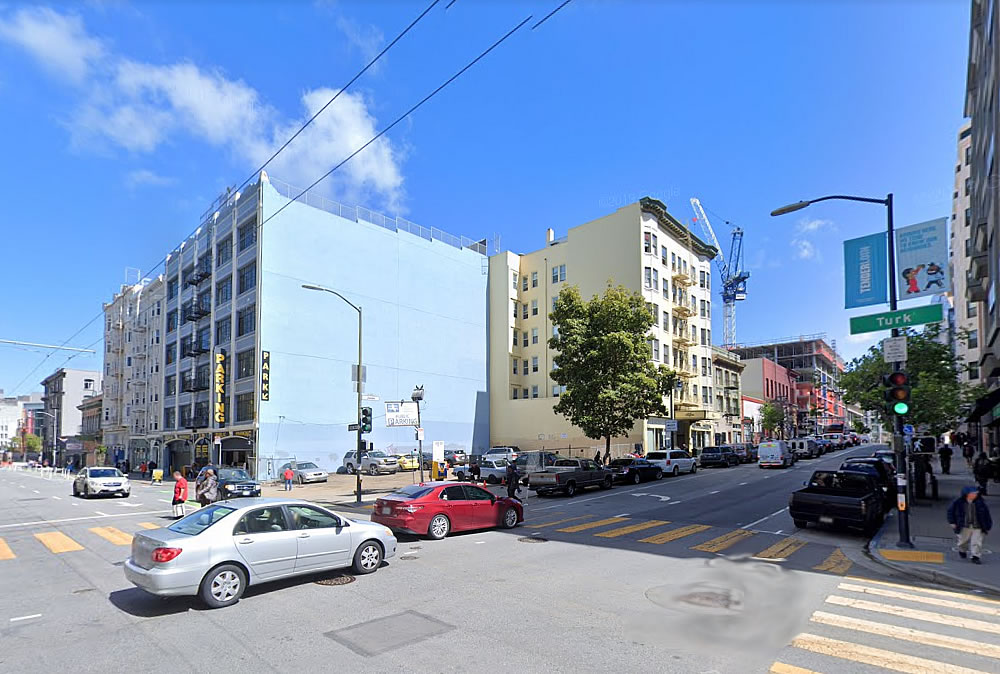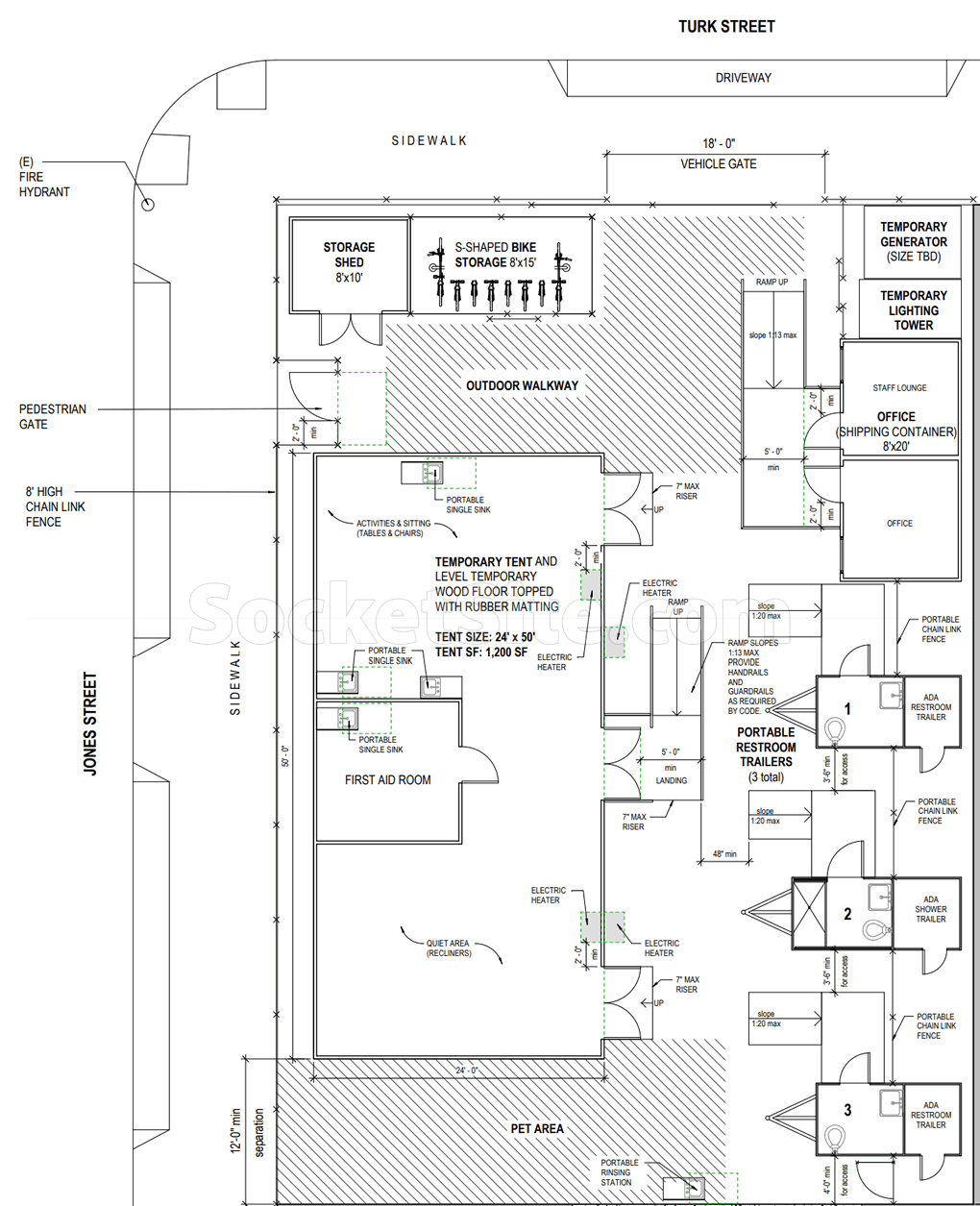Having eschewed an interim proposal for the parking lot parcel on the southeast corner of Jones and Turk to host a temporary village of tiny homes until the City’s planning for a below market rate building to rise on the Tenderloin site is completed, the detailed plans for a temporary drug sobering center to occupy the site have been drawn.
The roughly 5,000-square-foot, fenced-in center is slated to be staffed 24 hours a day, 7 days a week and for at least 18 months, to “provide a safe and monitored environment [for users] who are sobering from recent drug use,” in particular meth(amphetamine), with the typical length of stay projected to be between 6 and 18 hours (and less than 24) and all occupants “voluntary, ambulatory, directable and medically stable.”
In term of infrastructure, a shipping container will be used as an office and placed directly on top of the existing asphalt (along with a storage shed and bike rack); three portable restroom trailers will be parked on the site and serviced weekly; and a heated 1,200-square-foot tent, held down by weights and with a temporary floor, first aid room, portable sinks, tables, chairs and recliners will serve as the main facility.
And while the center could be appealed, it’s slated to be approved sans a public hearing and upon the Director of Public Works direction to proceed.


I’m inclined to say that this is sorely needed, but what would be much better would be a place for addicts to sober up from recent drug use and then be connected, involuntarily if necessary, to a rehab facility where they can start on their journey to becoming clean and sober in the long term.
One of the reasons that Navigation Centers run into opposition is that they offer “a low threshold for entry”. What that means for practical purposes is that homeless addicts do not have to be sober or drug-free to enter a Navigation Center and once enrolled, they can come and go at will. So some addicts smoke or inject themselves off-site and then return to the Navigation Center while they are high or to rest between drug use episodes.
Now this isn’t a Navigation Center, but it could serve that same purpose if addicts don’t use the opportunity to work toward long-term sobriety. It would be pretty awful to enable continued drug dependency at tax payer expense under the guise of (short-term) “sobering”.
I’m no expert in the field, but I am led to believe “involuntary rehab” is not a very successful technique. Addiction isn‘t an infection, and you can’t just flush it out. The approach of navigation centers, etc. is to give people a more stable lifestyle within which they can begin to reshape their attitude toward street living and, likely, drug dependency.
that’s not true. While mandatory rehab doesn’t work for everyone, it does work for some people, especially when it is 6 months or longer. even if it works for 20%, it’s worth it. housing without recovery is a waste as they will be OD’ing and spreading drug use in SROs or just back on the street. recovery 1st works and provides incentive for housing.
Really need to develop metrics for those addicts using this facility. What is the expectation, i mean honestly it seems they end up sobering on my west soma doorstep. Can we now call the HOT or sfpd and either force them to move or go to this facility??